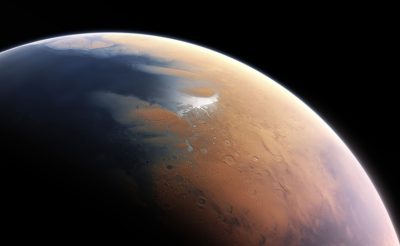
In the heat of the presidential election, political buzzwords like “racial discrimination,” “illegal immigrants” and “tax plans” are always on the news. Science, however, has been put on the backburner until recently.
On Oct. 11, President Barack Obama announced in an op-ed for CNN his goal for the United States to send “humans to Mars by the 2030s.” Obama also hosted the first White House Frontiers Conference in Pittsburgh on Oct. 13, which focused on “building U.S. capacity in science, technology, and innovation, and the new technologies, challenges, and goals that will continue to shape the 21st century and beyond,” according to the conference’s website.
According to NASA’s website, reaching this goal would require technological advancements in NASA’s rockets. The current rocket proposed to send humans to Mars is the Orion spacecraft, which NASA is currently preparing to send to the moon as a test drive of sorts. The Orion is still in development and its completion is mostly dependent on the availability of funds.
Kenneth Janes, a Boston University astronomy professor, said that although engineers may be close to finalizing the technology to transport humans to Mars, the trip will not be easy. Janes said the design of the craft has to balance between being large enough for people to survive while being small enough to be economically and physically efficient.
“It will be seven or eight months living in a spacecraft much smaller than the Space Station that’s up there now,” Janes said.
It is unclear whether humans would even be able to inhabit Mars once they fly to the planet; NASA said in 2015 that there is evidence for flowing water on Mars, but some researchers say the agency does not have enough evidence to back up this claim.
“It appears that there has been [water on Mars] in the past, but it might have been billions of years ago,” Janes said. “There is some evidence for flowing water currently from time to time … There may be water under the soil. The polar caps are partly water and they come and go during the seasons.”
However, Thomas Bania, another BU astronomy professor, said NASA has not discovered flowing water on Mars and that the only way humans would be able to successfully sustain life on Mars is through terraforming, or transforming the planet’s ecosystem into one similar to Earth’s.
“[NASA cites] indirect evidence that is due to water erosion and lack of carbonate rocks on Mars,” Bania said.
Questrom School of Business freshman Juan Jose Freydell said he thinks it is important for people to learn about the universe surrounding Earth, and landing on Mars might incite new curiosity in the solar system.
“Traveling to Mars is extremely important,” Freydell said. “Education influences people for the better.”
Janes said that although it is possible that humans will land on Mars one day, it might not be a practical goal, especially since taxpayers fund the space expeditions.
Bania said he thinks private companies, such as SpaceX, will reach Mars before the U.S. government.
“[Elon Musk, SpaceX CEO and lead designer] has set a goal for 2030, and it’s no accident that NASA has jumped on board as well,” Bania said.
Obama briefly mentioned in his CNN piece the importance of cooperation between NASA and private innovators such as SpaceX . So far, SpaceX has created several crafts including the Falcon Heavy, which they hope will one day bring humans to Mars.
Musk said in a presentation from September that the main reason nobody has landed on Mars yet is the high cost.
“There’s no intersection of … people who want to go and who can afford to go,” Musk said in the presentation. “In fact, right now you cannot go to Mars for infinite money.”
Musk said during the speech that an “optimistic” cost of sending humans to Mars would be “about $10 billion a person.” He said the possibility of establishing a “self-sustaining civilization” on the red planet is “very high” if they are able to get the cost down to about $200,000 per person, which is the median cost for a home in the United States.
Whether or not the United States can make it to Mars by the 2030s, let alone establish a civilization on the planet, is still up for debate.
“Assuming the trip to Mars happens,” Janes said, “it would likely be one of the biggest benefits of the Space Station thus far.”

















































































































